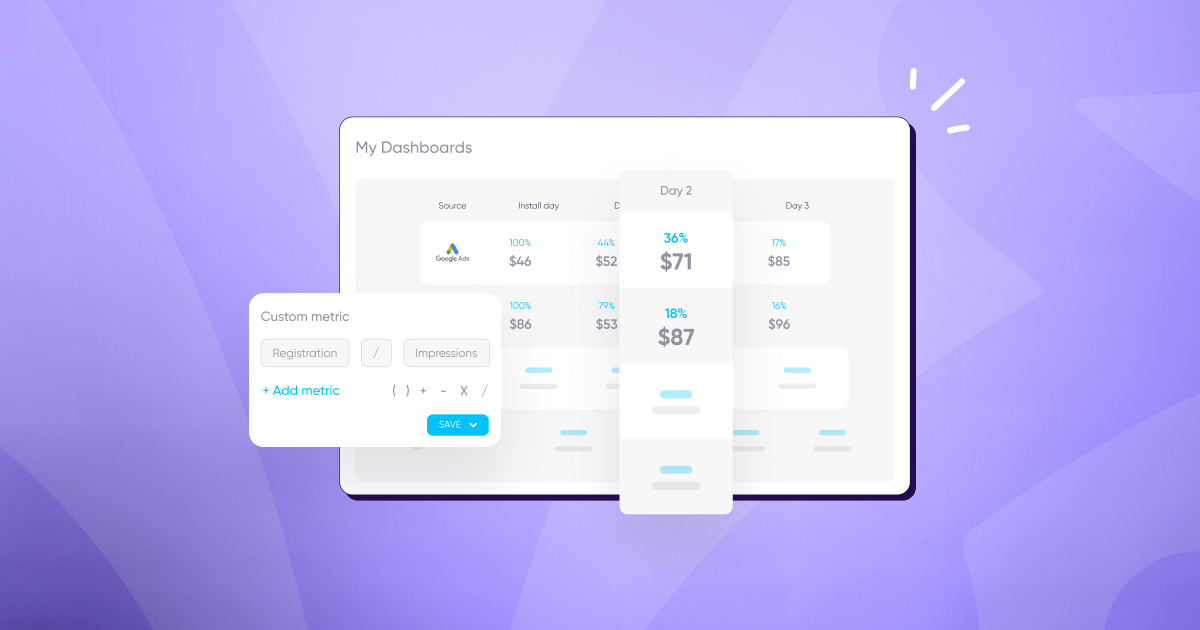
How to find creative winners and use AI to maximize their value
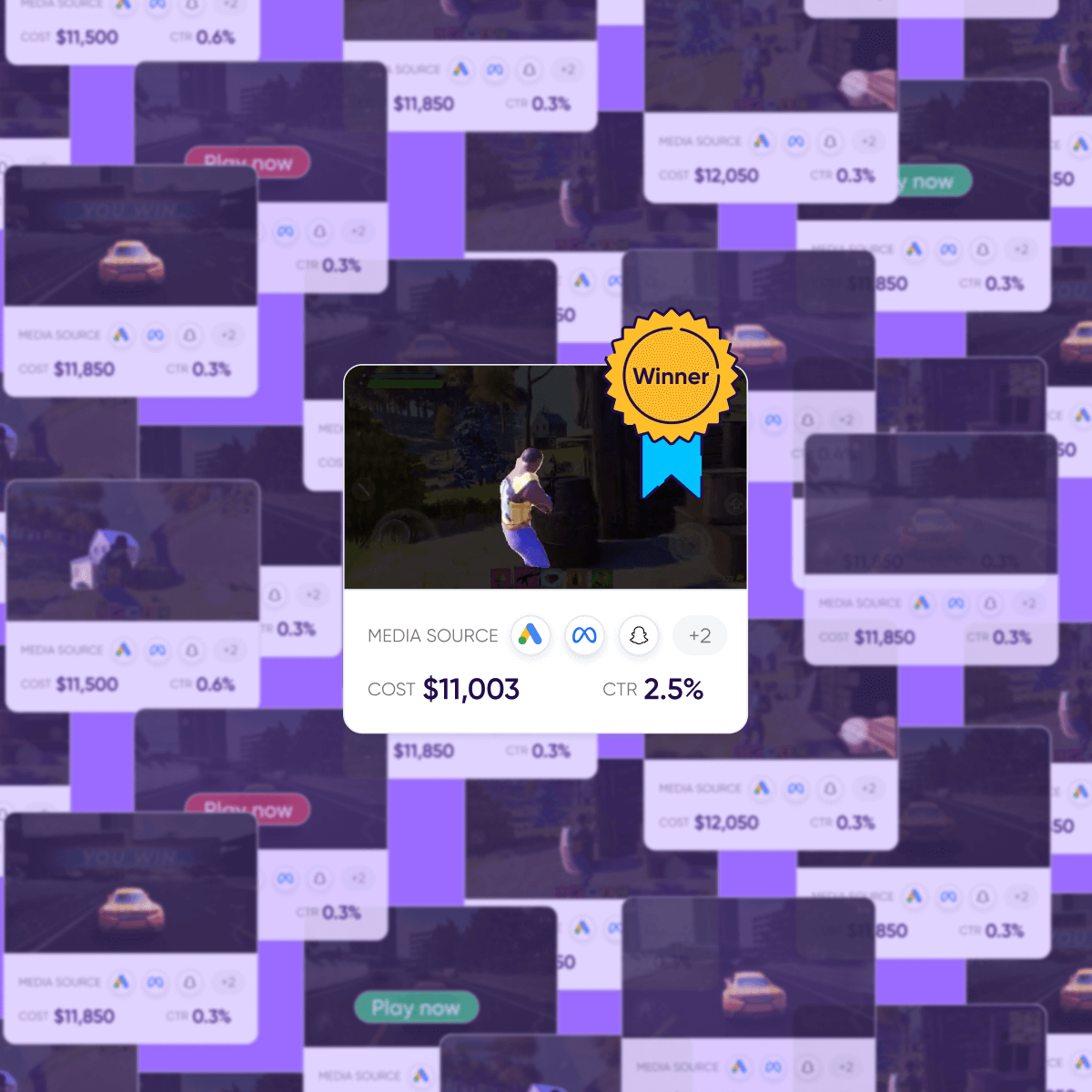
When it comes to user acquisition, algorithms and automation play vital roles, but a crucial element remains firmly in the hands of creative minds: ad creatives.
Nielsen found that creatives account for a significant 49% of an ad’s success. But a successful ad campaign isn’t just about targeting the right audience or optimizing bid strategies. It’s also about that attention-grabbing visual or message that grabs people’s attention and gets them to act.
What’s truly intriguing is that a creative “winner” isn’t merely a slightly improved ad; it can be a game-changer, outperforming others not by 10, but potentially by 100 or even 1000 times. This isn’t solely due to superior performance (though that’s often the case); it’s because these winners excel in scalability and deliver exceptional returns on investment.
However, creative distribution isn’t a level playing field. More often than not, over 90% of creatives end up in the shadows, while a select few winners get the lion’s share, getting 80-90% of the ad budget.
So, how do you find these elusive creative winners?
1. The creative cycle — how to find a winner
Discovering a creative winner is a nuanced journey that involves going through several promising concepts before finally striking gold. It’s a blend of creativity and strategy, guided by a dynamic process known as the creative cycle.
The stages of the creative cycle
The process works as follows:
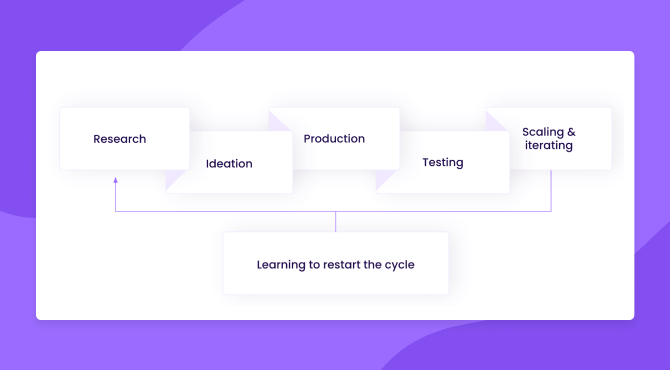
Research: Lay the groundwork for informed decision-making by understanding your audience, analyzing competitors, and reviewing past data.
Ideation: Brainstorm innovative ideas and craft compelling messages after thorough research.
Production: Transform ideas and concepts into testable creative assets for real-world campaigns.
Testing: This stage puts your creatives to the test. Evaluate audience reactions and engagement to identify potential winners.
Scaling & iterating: Allocate more resources and budget to the winning creative, while also refining and improving it through iteration.
Learning to restart the cycle: Embrace the creative cycle’s continuity, returning with fresh insights to enhance outcomes.
Identifying a creative winner — it’s more than meets the eye
Next, let’s understand how to identify a true creative winner within this dynamic cycle:
- “You know it when you see it”: Your creative winner is often self-evident. It’s the one that enjoys the lion’s share of delivery — be it impressions, budget allocation, or the overall cost.
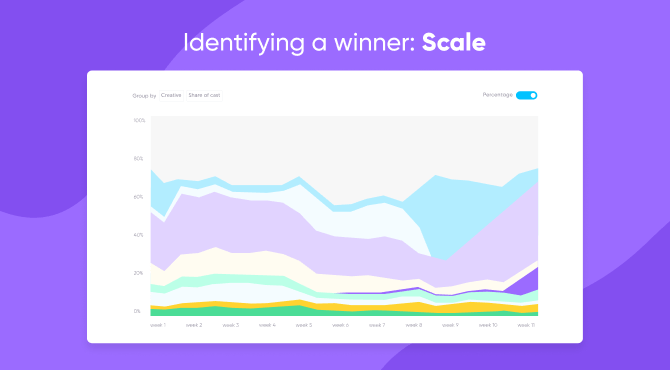
2. Evaluating delivery vs. performance: Being in the spotlight isn’t enough. It’s equally important to assess whether this dominance translates into performance. Platforms frequently concentrate budgets on a select few ads, but are the downstream KPIs aligning? Is there a noticeable improvement in retention, lifetime value (LTV), or return on ad spend (ROAS) for the ad group associated with this creative?
3. True beyond testing environment: Initial testing environments can be fertile ground for creative winners, but the litmus test is whether it can hold its ground — and even surpass — existing winners in high-spending ad groups when scaled up
A winning ad creative seamlessly combines volume and performance, excelling in both reach and profitability. It’s this equilibrium that propels it from a contender to the ultimate ad champion.
2. “We have a winner” — now, you squeeze the lemon
Before you kick back and let things unfold without any intervention, consider this: your passive approach might cause you to overlook untapped opportunities.
To get the best results, you must extract every ounce of potential from that creative. Here’s how:
- Expand its horizons: Determine if your winning creative appeals universally or has limitations. Test its scalability by increasing ad spend and expanding to wider networks, platforms, countries, or target criteria. Ensure it performs at a larger scale.
- Refine and iterate: In ideation and production, we often create “Minimum Viable Product” (MVP) ads for quick testing and validation. However, a promising creative is rarely the final iteration, so you have to continuously polish and align it with your brand and messaging standards.
- Tweak for optimization: Tailor the creative for diverse audiences through localization efforts like voiceovers, subtitles, or text changes. Adapt to different platform preferences by modifying size, aspect ratio, video length, or overlay elements for optimized performance on various channels.
3. Squeeze the lemon for every drop
Yup, you’ve got to squeeze the metaphorical lemon further, refining and optimizing your winning creative.
Identify the winning elements
Identify the specific elements that make it stand out in the crowd:
- Look back: Check out your past ad content and see what people liked about it. Are there common traits or strategies — the way you said things, the style, or how it looked — that consistently lead to success?
- Metrics matter: Look at the data and numbers to see why it did well. Is it the hook rate that grabs the audience’s attention, the hold rate that keeps them engaged, or the video completion time/percentage that outperforms the competition?
- Give it a name: Use a clear system to name and organize the elements of your ad or content. This makes it easier to track and compare variations efficiently, especially when AI enters the scene. More on that later.
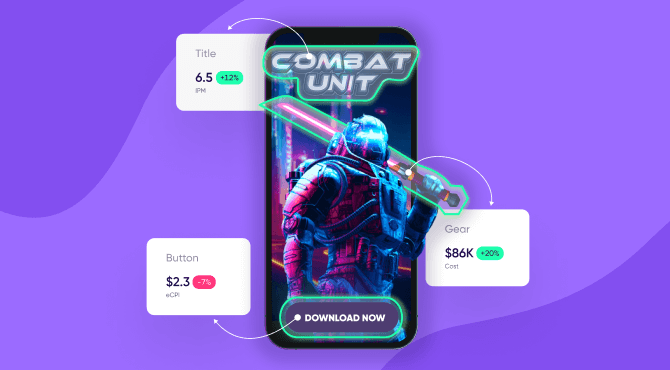
“Frankenstein” your winner
Now, it’s time to get a little experimental, where you tweak and test different versions.
- Create variants: Test changes to different parts — a different hook, varied color schemes, alternative backgrounds, or even a different ending. This process helps isolate the specific assets that contribute most to its success.
- Beware of the blend: While dissecting and tweaking your creative, be careful to not disrupt the delicate balance that makes it work. Sometimes, it’s the synergy of elements that leads to success.
- Recombine winning elements: Rather than reinventing the wheel, consider recombining your winning elements with other proven assets. For example, you could retain the winning hook but experiment with a different central message (the “body”), or test various end cards. This way, you can preserve what works while optimizing other parts.
In essence, go beyond short-term wins and focus on the long-term viability and adaptability of successful marketing strategies. Assess the universality, scalability, and potential for refinement of winning campaigns to ensure sustained success.
4. Taking it to the next level with AI
AI’s real breakthrough is in marketing. While we’re familiar with the likes of ChatGPT and Midjourney, the landscape is evolving at an astonishing pace with a myriad of AI tools tailored for marketing purposes.
AI and video creatives
AI can change how you analyze creative content within videos by deconstructing it into multiple layers, helping you get a profound understanding of what truly drives engagement.
How does it work? In simple terms, it’s all about AI algorithms grounded in computer vision and natural language processing (NLP).
Computer vision allows computers to interpret visuals, breaking them down into elements to recognize objects, people, or scenes based on patterns, shapes, and colors. For example, it can identify a cat in a photo by analyzing its features.
NLP also enables computers to understand human language, deciphering words, sentences, and context. This then enables AI to distinguish between questions, opinions, and commands.
The potential of layered analysis
With AI, creative analysis becomes a journey through multiple layers:
- Categorizing video creatives based on factors like duration (evergreen or short-term) to assess their impact on performance.
- Identifying distinct scenes within a video, such as openings, endings, animated sequences, or user-generated content segments, to understand their contribution to overall performance.
- Analyzing frames at a granular level, breaking them down into fundamental elements using trained segmentation models. For example, in a car racing ad, AI can identify backgrounds, car colors, road signs, and more.

NLP also plays a crucial role in creative optimization. It encodes and extracts narration and text, aiding in the classification of scenes and creatives and identifying key messages.
By marrying granular scene and element data with performance metrics from various channels and mobile measurement platforms (MMP), you can craft winning strategies and optimize creatives on an unprecedented scale.
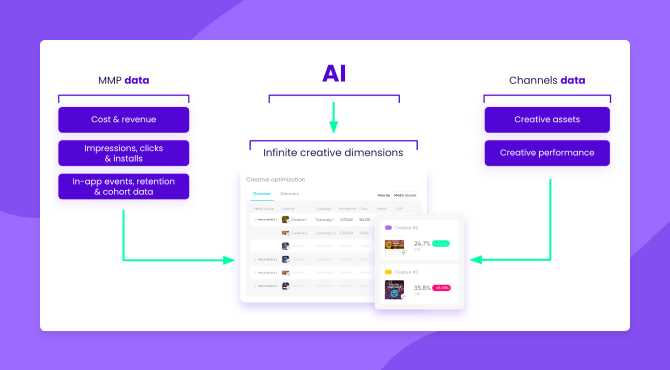
The AI advantage
Ultimately, AI empowers marketers to:
- Identify and label creative elements, shedding light on what makes them effective.
- Generate numerous variations at a fraction of the cost compared to doing it manually. It can even come up with combinations that humans might never think of.
At this point, the challenge arises when we have hundreds of variations to test.
This is where points 1 and 2 come together: AI can analyze past data and predict which variations are most likely to succeed. So, you don’t have to test randomly anymore; instead, you can fine-tune your creative strategies with data-driven precision.
5. Monitor carefully
Even the most formidable creative winners can’t escape the inevitable march of time. To maintain the vitality of your creative winners, consider the following measures:
Monitor for fatigue
Keep an eye on crucial KPIs like Click-Through Rate (CTR), Interaction Per Mille (IPM), and delivery percentage. These metrics don’t stay static; they reach a peak before entering a gradual decline. They act as early indicators of fatigue, signaling the need for intervention before performance deteriorates significantly.
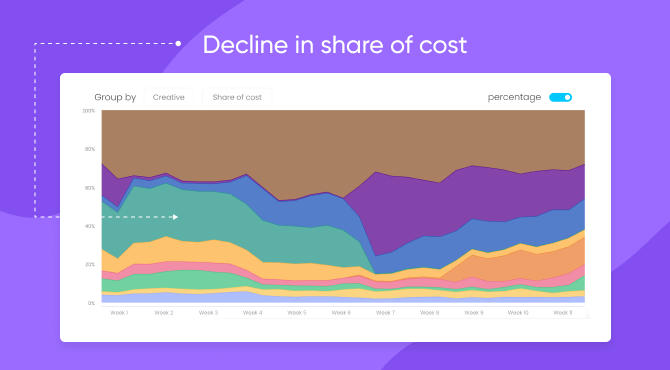
Embrace the Frankenstein approach
Marketing creativity thrives on experimentation and adaptation. To delay the inevitable decline of your winning creative, consider adopting what we call the “Frankenstein” strategy.
This involves crafting variants or iterations of your winning creative — not to replace it, but to breathe new life into it. Conduct A/B tests to compare their performance against the original winner, ensuring alignment with current audience preferences.
Never stop testing in parallel
In digital marketing, innovation is a marketer’s best weapon. Continuously test new concepts to broaden your reach and safeguard against your current champion’s decline. These ongoing tests serve as a safety net and help you connect with a more diverse audience.
Also, experiment with different messaging, creatives, ad formats, and channels to maintain success and uncover new winners for specific segments.
Key Takeaways
- To increase your chances of discovering a winning creative, conduct thorough research and consistently generate a variety of ideas. Don’t limit yourself; explore different angles and approaches.
- When a creative winner starts consuming a significant portion of your ad budget, don’t hastily pull the plug. Instead, scrutinize its performance. Check ROAS and investigate why and where it’s effective, including specific networks and metrics.
- After pinpointing a winning creative, strategically extend its impact by integrating it into other pertinent campaigns. Leverage its effectiveness to elevate the performance of interconnected initiatives.
- Extend the life and reach of your creative winner by exploring localization and recombination. Tailor it to specific audiences or contexts to keep it fresh and effective.
- Continuously refine every aspect of your campaign. Identify variants that outperform the original and learn what drives their success.
- Monitor your creative winner for any signs of fatigue. As its performance plateaus or declines, be prepared to transition to new concepts in your pipeline.
- AI offers unprecedented insights and automation capabilities that can elevate your ad campaigns. Use it to enhance creative performance.



